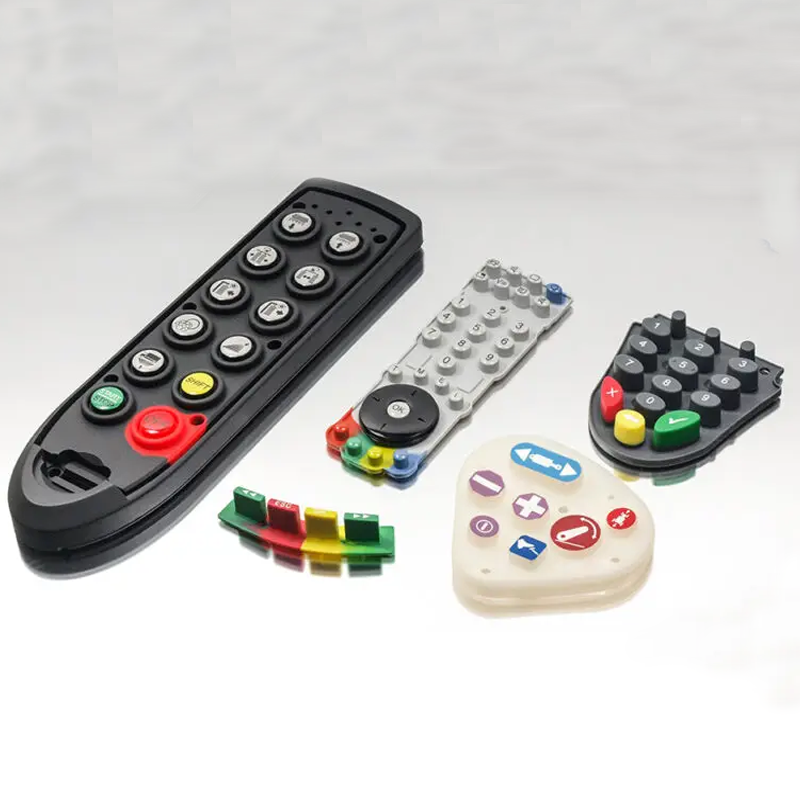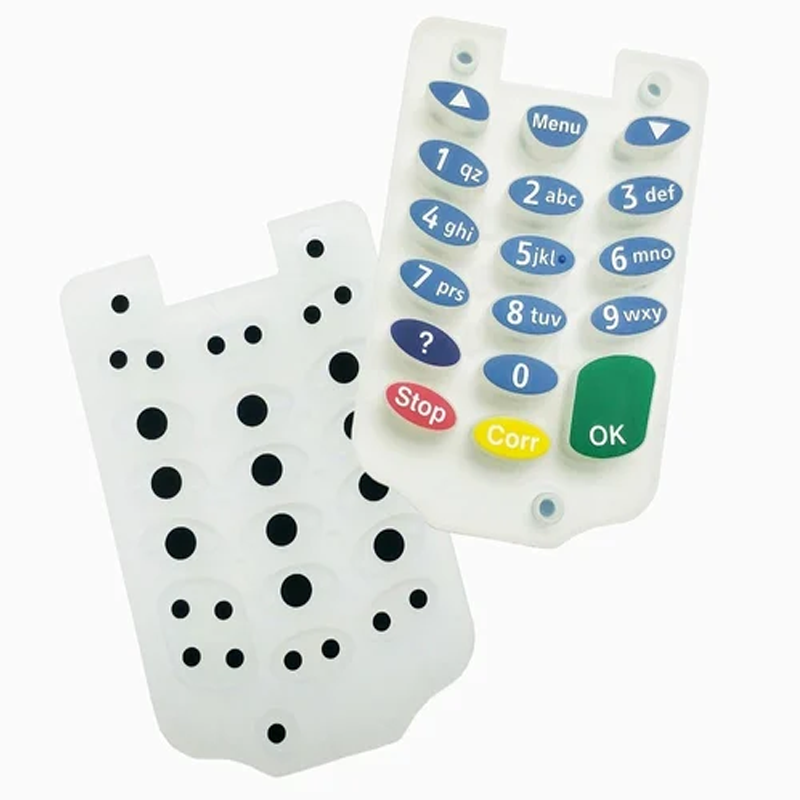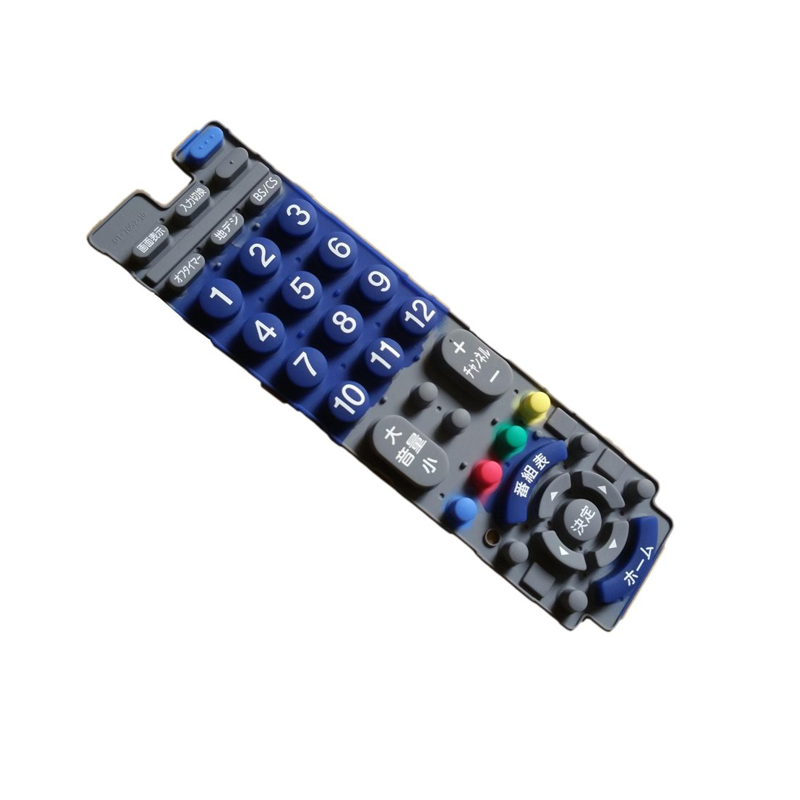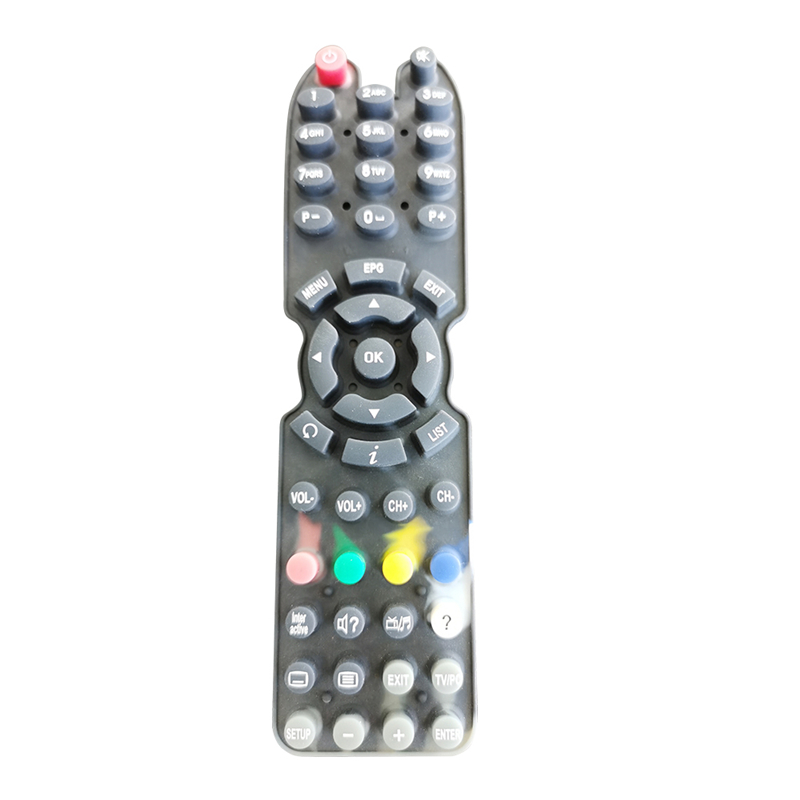Remote controls are indispensable components in today’s consumer electronics landscape. These input devices allow users to control electronic equipment from a distance, offering a level of convenience and flexibility that has become an expectation for modern products. Remote controls are found in a wide variety of devices, including televisions, fans, audio systems, and specialized lighting, to name just a few. For product developers and engineers aiming to create cutting-edge electronic devices, the design and functionality of remote controls are critical to ensuring positive user experiences and overall product success.
At Silkeypad, we specialize in crafting high-quality silicone keypads for remote controls, providing customizable solutions that enhance the usability and functionality of electronic devices. Whether you’re designing a new product or upgrading an existing one, we bring a wealth of expertise to help make your devices more intuitive, user-friendly, and ergonomically sound. This blog will delve into the importance of remote control design and explore how our products contribute to better consumer electronics.
Why Remote Controls Are Vital in Today’s Consumer Electronics
Adding a remote control to a product increases its cost, but the value it delivers far surpasses this expense. Remote controls are seen as essential by most consumers, especially in products with display screens, such as televisions, monitors, and home entertainment systems. Without remote controls, adjusting settings, changing channels, or interacting with devices from a distance would be cumbersome and impractical. Remote controls enable users to place electronic devices in more convenient locations, such as mounting televisions on walls or positioning audio systems out of reach.
More than just convenience, remote controls add significant value to a product. Consumers view remote controls as time-saving devices, improving their interaction with the product. From a manufacturer’s perspective, offering a remote control can lead to additional revenue. Many companies sell upgraded or custom-designed remotes as separate accessories, offering consumers the option to enhance their device’s functionality and aesthetics, further increasing the appeal of the product.

Understanding Remote Control Protocols
The communication protocol used by remote controls plays a crucial role in how effectively they interact with the electronic devices they control. Different protocols are suitable for different requirements based on factors like range, reliability, and susceptibility to interference. Let’s take a closer look at the most commonly used remote control protocols.
1. Infrared (IR) Remote Controls
Infrared (IR) is one of the most widely adopted technologies for remote control communication. IR remote controls rely on line-of-sight transmissions, allowing them to operate over short to medium ranges. These remotes are inexpensive to produce, making them ideal for consumer electronic devices such as televisions and audio systems. One of the main advantages of IR technology is its resistance to interference, which makes it a reliable option in many common household environments.
2. Radio Frequency (RF) Remote Controls
For industrial or commercial applications requiring longer-range communication or bi-directional interaction, radio frequency (RF) remote controls are often preferred. RF systems operate on different frequency bands and can transmit signals through walls and other obstacles, making them suitable for more complex environments where the user cannot easily see or confirm the device’s response. RF remotes are more expensive to produce than IR remotes, but they offer greater functionality and are ideal for applications that need real-time feedback, such as industrial machinery or automation.

3. Wireless Remote Controls
Wireless remote controls, which often rely on existing Wi-Fi or Bluetooth networks, provide an additional level of sophistication. These remotes are capable of two-way communication, similar to RF remotes, allowing devices to transmit feedback to users. While wireless remote controls are increasingly used in gaming consoles, smart home devices, and entertainment systems, they can be more susceptible to interference from other devices. Despite these challenges, they offer a highly customizable experience and are increasingly used in sophisticated consumer electronics.
The Importance of Keypads in Remote Control Design
At Silkeypad, we recognize that the keypad is a critical component of remote control design. Silicone keypads are widely used in both consumer electronics and industrial applications due to their durability, flexibility, and cost-effectiveness. These keypads are designed to withstand a variety of environmental conditions, making them perfect for remote controls that will be subjected to frequent use.
In the average household, consumers may have several remote controls for different devices, from televisions and cable boxes to home theater systems and ceiling fans. Most of these remotes use silicone keypads to ensure tactile feedback and ease of use. Silkeypad specializes in creating custom silicone keypads that are not only functional but also aesthetically pleasing, ensuring a satisfying user experience. We believe that a well-designed keypad is crucial in enhancing the user interface, allowing for easy navigation while keeping the design minimalistic and intuitive.

Key Considerations for Keypad Design
When designing silicone keypads for remote controls, several factors must be considered to ensure both functionality and user satisfaction. At Silkeypad, we focus on the following essential design elements to create the most effective remote control keypads:
1. User-Friendly Layout
The layout of the keys should be intuitive, with buttons grouped according to their function. This logical arrangement ensures that users can easily locate and operate the remote without confusion.
2. Clear and Intuitive Labeling
Clear labeling is essential for ensuring that users can quickly understand the function of each button. The labels should be legible, using easily recognizable symbols and fonts to minimize confusion and improve the overall user experience.

3. Ergonomics and Tactile Feedback
The ergonomics of the keypad and the tactile feedback provided by each button are vital for usability. Silicone keypads are renowned for their tactile responsiveness, offering satisfying feedback that makes the remote easy and enjoyable to use. The buttons should be designed with the right amount of resistance to ensure comfortable operation.
4. Bezel Design
The bezel, or outer frame surrounding the keypad, serves both functional and aesthetic purposes. It protects the keypad from damage while enhancing the overall look of the remote control. A well-designed bezel should complement the device’s overall aesthetic and provide durability.
Why Partner with Silkeypad for Remote Control Keypad Design?
At Silkeypad, we are committed to providing the highest quality silicone keypads tailored to meet your specific needs. Whether you are designing a new remote control or improving an existing product, we have the expertise and technology to create custom solutions that meet the highest standards of performance, reliability, and user satisfaction.
We use cutting-edge manufacturing techniques and premium materials to ensure that our keypads are durable, cost-effective, and suited to a wide range of consumer and industrial applications. By collaborating with Silkeypad, you can rest assured that your remote control will offer superior functionality, aesthetics, and user experience.

If you’re ready to elevate your product’s design and improve the user experience, reach out to Silkeypad today for a free quote. Our team of experts will work closely with you to design the perfect silicone keypad solution for your remote control. Let us help you enhance your product and meet your customers’ needs with the best in remote control technology.
By focusing on smart design, reliable communication protocols, and user-friendly keypads, you can create remote controls that stand out in today’s competitive market. Silkeypad is here to help you achieve that goal and bring your product ideas to life.